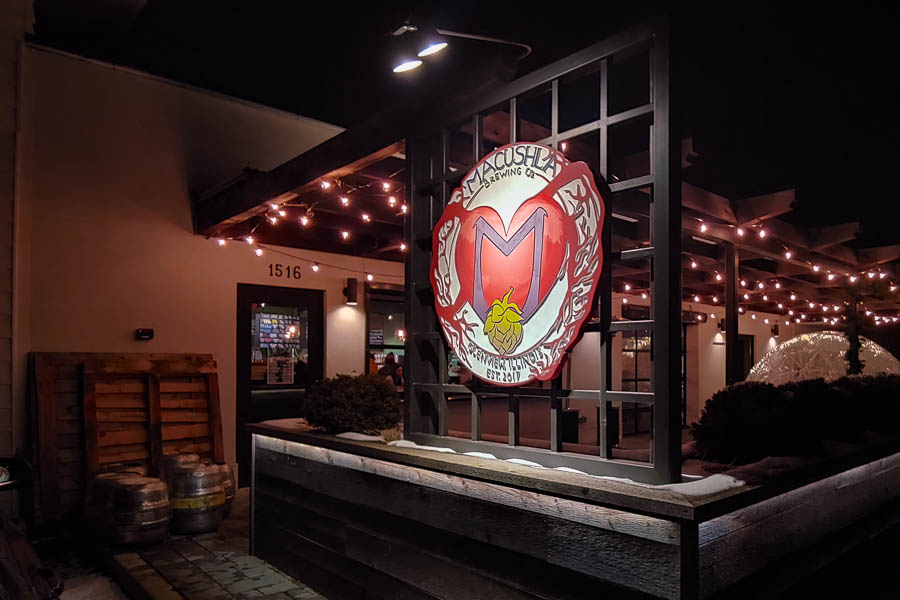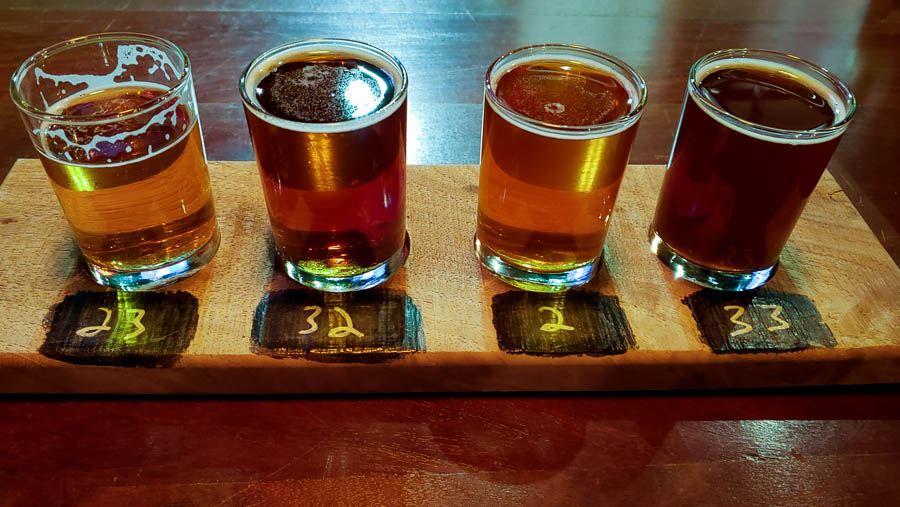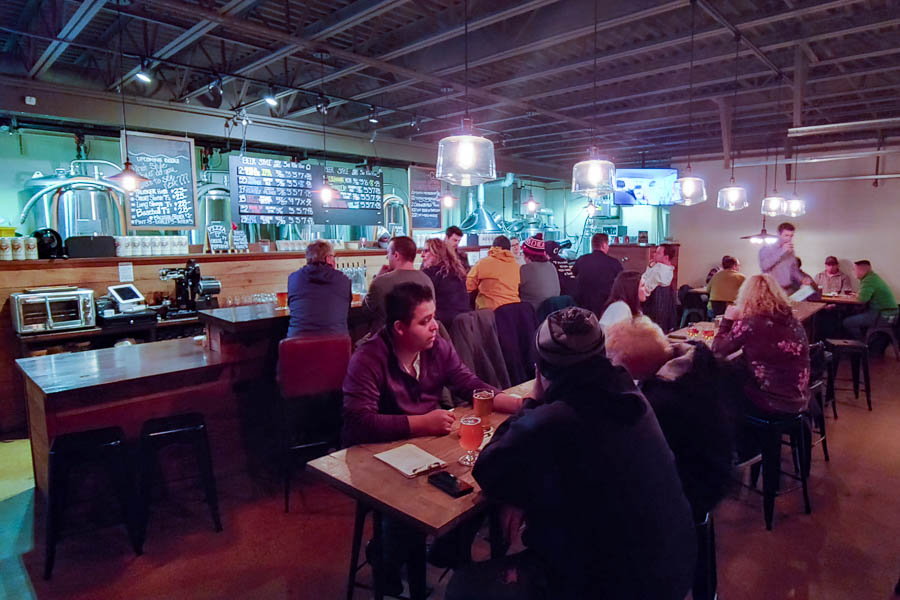Welcome to my new project: Brews and Choos. Off and on over the next year, I'm going to visit 98 breweries and distilleries that are within about 1.5 km of rail lines around Chicago. Some of them are right downtown; others require a 100-minute schlep to a neighboring state.
I'll post reviews and visit notes in chronological order. For a list organized by train line, check out the explanation page.
Here's the first stop.
Brewery: Macushla Brewing, 1516 E. Lake Ave., Glenview, Ill.
Train line: Metra Milwaukee District North, Glenview station.
Time from Chicago (Union Station): 38 minutes, zone D
Distance from station: 1.3 km

"Macushla" means "my pulse, my lifeblood, my darling" in Gaelic. Mike and Megan Welch founded the brewpub in 2015 in Mike's home town of Glenview, Ill. Unfortunately, Mike died in 2016, and Megan now runs the brewery on her own.
I had a 4-beer sampler from their current line-up: Easy Sipsa, a 4.1% 20 IBU session IPA; Ring of Fire, 5.2%, 41 IBUs, Scottish IPA; Chalk Eater, 7.2%, 55 IBUs, IPA; and The Hammer, 9.75%, 20 IBUs, Scotch ale.

They were all pretty good. The Easy Sipsa lived up to its name; the Chalk Eater hit me with a full dose of hops and alcohol. The Hammer, despite its strength, tasted sweet and malty, with notes of pear and maple. They don't serve pints of that one; sip it slowly.

I also liked the vibe. The place is small and cozy, with a modest patio (complete with igloo). They have pretzels and small pizzas in the bar, and an arrangement with Hackney's next door if you want something more substantial.
Beer garden? Yes
Dogs OK? No
Televisions? 2, unavoidable
Serves food? Snacks; full kitchen next door
Would hang out with a book? Maybe
Would hang out with friends? Maybe
Would go back? Yes